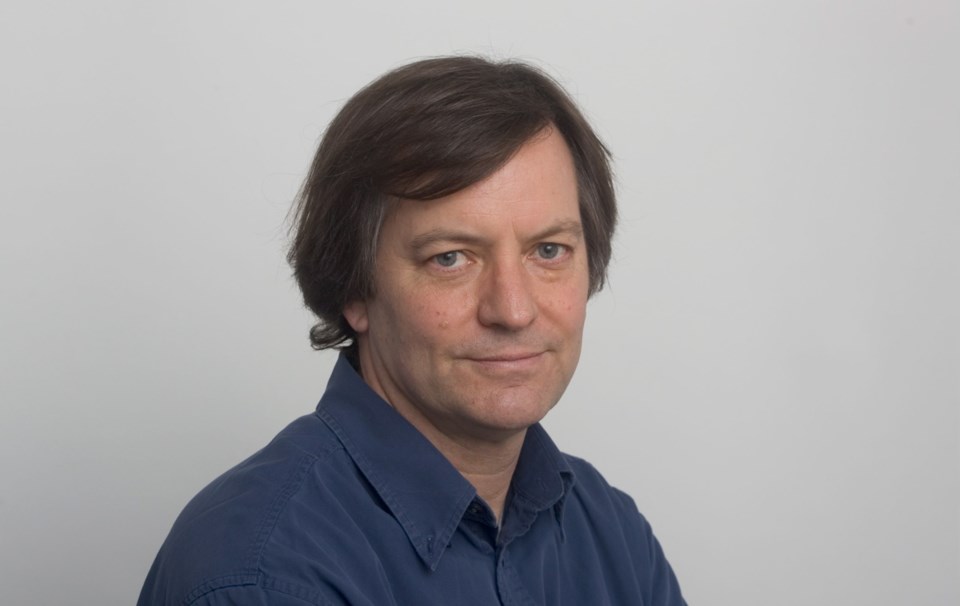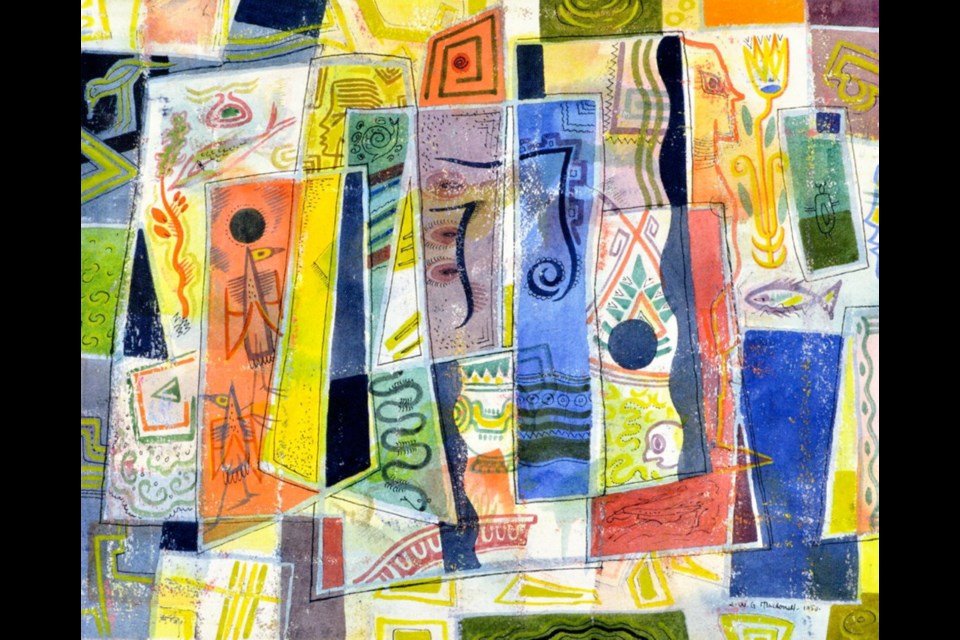 The Moss Street Paint-In is next Saturday, July 18. And while you are there, donÔÇÖt forget to see the extensive shows of paintings by J.W.G. Macdonald, David Milne and Emily Carr ÔÇö all on now. Canadian art history is being well served in Victoria, a rarity in galleries today.
The Moss Street Paint-In is next Saturday, July 18. And while you are there, donÔÇÖt forget to see the extensive shows of paintings by J.W.G. Macdonald, David Milne and Emily Carr ÔÇö all on now. Canadian art history is being well served in Victoria, a rarity in galleries today.
Evolving Form is a travelling retrospective exhibition presenting the full scope of work by Macdonald (1897-1960), a Canadian artist born in Scotland. After serving in the First World War, Macdonald studied at Edinburgh College of Art, and then worked there in textile design.
He was hired by the new Vancouver School of Decorative Art and Design to teach commercial art and design. Arriving in British Columbia in 1926, he inevitably fell under the sway of Fred Varley, the charismatic member of the Group of Seven, who was just discovering the West Coast. Macdonald became a landscape painter.
Then came the Depression, and by 1935 Macdonald was out of a job. So he moved with wife and children to remote Nootka Sound on Vancouver IslandÔÇÖs western margin. The year he spent there was╠²difficult and dangerous, and it opened his eyes in many ways. A dramatic closeness to nature resulted in a new sort of painting, his ÔÇ£modalities.ÔÇØ
These geometric nature studies are among his best work. With the arrival of Lawren Harris on the scene in 1940, MacdonaldÔÇÖs interests took a spiritual turn, inspired by the writings of P.D. Ouspensky.
This undefined spiritualism received some direction when the artist met Dr.╠²Grace Pailthorpe in 1944. She was a psychiatrist and artist dedicated to surrealism and the technique of ÔÇ£automaticÔÇØ painting. Through the 1940s, Macdonald made many watercolour ÔÇ£automaticsÔÇØ under her guidance.
As the artist wrote: ÔÇ£Every time you take up a pencil and begin scribbling, while waiting at a telephone for a call, and your thoughts are not concentrated on what you are scribbling, you are drawing automatically.ÔÇØ Pailthorpe thought this activity awakened and╠²released oneÔÇÖs ÔÇ£inner consciousness.ÔÇØ
The best of his surrealistic watercolours were collected by Pailthorpe and later deposited at the Scottish National Gallery of Modern Art. They show that Macdonald was constantly torn between trying to release his subconscious and trying to make the resulting doodles ÔÇ£look likeÔÇØ something ÔÇö a bird, a fish, a person. A man of MacdonaldÔÇÖs skill in composition and colour just couldnÔÇÖt let go of his conscious mind, and his repertoire of mark-making tropes leaves these ÔÇ£automaticsÔÇØ somewhere between cartoons and Kandinsky.
In the 1950s, Macdonald was invited to teach at the Ontario College of Art in Toronto. In that stimulating atmosphere he scaled up his ÔÇ£automaticÔÇØ watercolours into the oil medium. Macdonald also visited New York, where he met the tastemakers and teachers of abstract expressionism, including Clement Greenberg and Hans Hoffman.
At home in Toronto, he was the eminence grise of the young Painters Eleven group. His canvases became larger and more serious. They were avidly collected by the National Gallery, the Art Gallery of Ontario and the Oshawa Art Gallery, among others.
The paintings had by now left all subject matter behind, though his titles often suggest a ÔÇ£readingÔÇØ of the shapes: Fleeting Breath, Drifting Forms, Lament. From a distance the paintings appear to be spontaneous gestures, but closer examination reveals the hand of the artist fussing over the edges and touching up the patterning of every image.
Macdonald always remained in control, even while giving the impression of spontaneous authenticity. In this show ÔÇö his greatest hits ÔÇö the paintings are effective, for he was a skilful and successful painter.
But where was he taking us? What is he trying to say? Though somewhat a transcendentalist, he wasnÔÇÖt able to tap into the same force that inspired Emily Carr. The Victoria galleryÔÇÖs wonderful and extensive collection of CarrÔÇÖs work, one of the great ornaments of our city, is hung in the room next door. Carr leaves you in no doubt what she meant by her painting of a tree.
A new show of David MilneÔÇÖs paintings hangs nearby in yet another gallery. Milne is always regarded as ÔÇ£a painterÔÇÖs painter,ÔÇØ and Victoria is indeed fortunate to have been given 18 of his originals. Some of these are as simple as a childÔÇÖs painting, yet no matter what the subject, MilneÔÇÖs artwork is as complex as a game of chess. There is nothing frivolous about these sublime little essays.
Painting with a scrubby brush and a small range of subdued colours, Milne chose for subject matter a distant hill, logs by the lakeside or a pot of flowers. And yet the man is revealed. His considered choices are weighed in every brushstroke. When one discovers how David Milne makes each stroke count according to his own mysterious algebra, all of MacdonaldÔÇÖs dabbling into the subconscious and his ÔÇ£modalitiesÔÇØ seem beside the point.
Macdonald was creating larger and larger canvases. If they werenÔÇÖt the spontaneous expression of his subconscious, what were they? Lawren Harris painted similar canvases, though his abstracts were created in the service of Theosophy. Emily Carr painted her pictures as a form of worship of the power of nature.
David Milne didnÔÇÖt bother with any of that ÔÇö he was simply going after unity, simplicity and compression on the picture plane. It seems that, eventually, Macdonald was producing well-made abstract designs.
╠²
Jock Macdonald: Evolving Form, until Sept. 7
David Milne: From the Collection, until Oct. 25
Emily Carr and the Younger Generation, ongoing
Art Gallery of Greater Victoria, 1040 Moss St., 250-384-4171, aggv.ca



